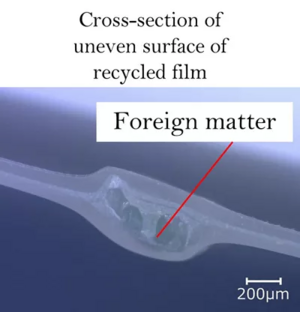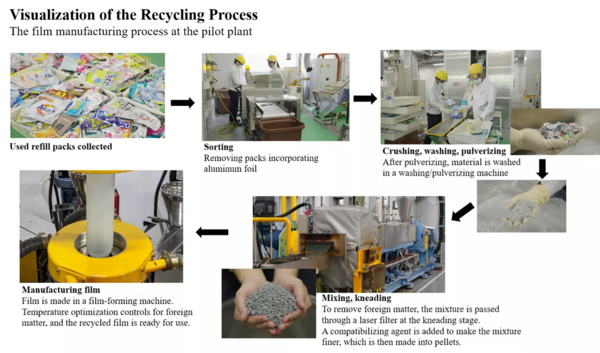Refill packs (1,620g) of Kao’s Attack ZERO using the newly-developed recycled material will go on sale in limited quantities at selected stores1 , with gradual introduction starting on May 29, 2023. Kao is the world’s first company2 to use film-to-film recycling technology3 to transform used refill packs4 collected from the public and other sources into new refill packs.
Background
In April 2019, the Kao Group established its ESG strategy, the Kirei Lifestyle Plan, which outlines 19 leadership actions, one of which is zero waste. To achieve zero waste, Kao promotes Innovation in Reduction and Innovation in Recycling CO2 emissions, with the goal of creating a circular economy for plastic packaging.
Actions that Kao has taken so far to reduce the quantity of plastic it uses for containers include making products more highly concentrated to reduce package size and developing and promoting the use of refill and replacement products. Kao also promoted recycling, assuming responsibility for the entire product life cycle through to disposal. In addition, Kao has field-tested collection of used refill packs in cooperation with local governments, enterprises and retailers to establish a sustainable collection system and develop recycling technologies. Kao views its achievement of developing film-to-film recycling to reuse material from used refill packs as a major step toward encouraging consumers to be more aware of the need to recycle.
The Road to Recycling Used Refill Packs
Film packaging (measuring approx. 100–250μm) for refill packs is a composite of several thin layers of different materials. Similarly to primary containers, it is designed to protect pack content from temperature, humidity and UV rays. This is why refill packs use a multi-layer construction consisting mainly of polyethylene (approx. 80%) and several other materials, including polyethylene terephthalate (PET) and polyamides (nylon). Refill packs for some products may also incorporate metallic film, usually aluminum foil; thus, the composition of refill packs on the market varies widely. But while such packs, which combine different functional materials, use less resin to make, it was commonly believed that developing film-to-film recycling technology would be difficult because of the use of ink for printing pack exteriors, in addition to the various materials in the film. Kao, working with local governments, enterprises, retailers and consumers, began collecting used refill packs in 2016 and developing film-to-film recycling technology. In 2021, the company set up a pilot plant at its Wakayama Research Laboratories to work on developing and testing recycling of its film packaging.










